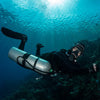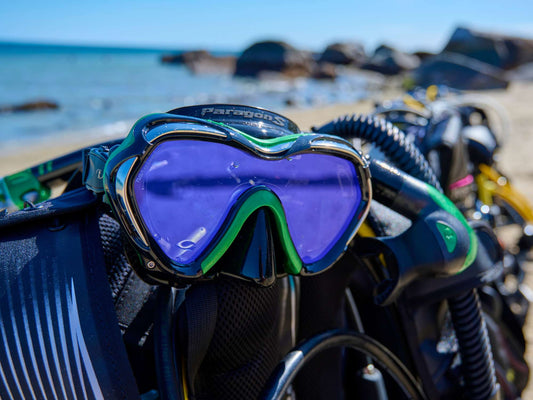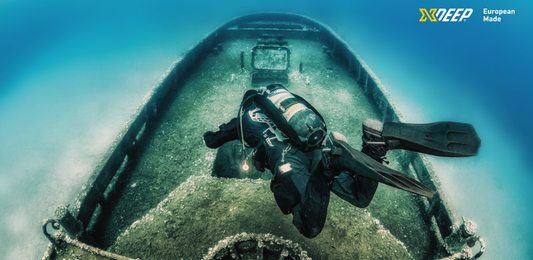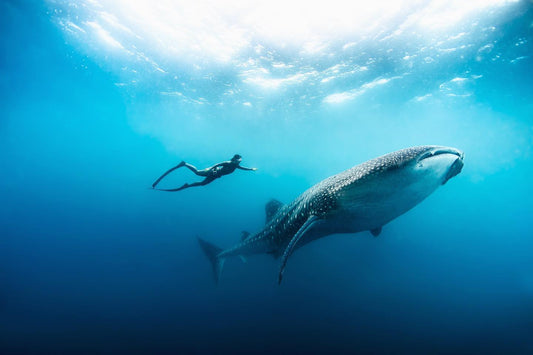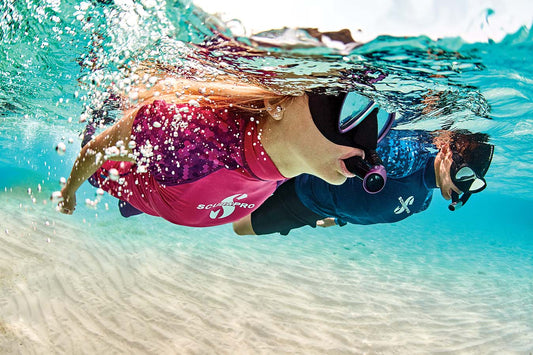Shearwater Research describe themselves as “the world leader in the field of dive computers for serious scuba divers”. The company was founded in Canada in 2004 by Bruce Partridge, an advanced technical diver who had a background in computer systems design and embedded programming. His vision for Shearwater was to provide reliable, user-friendly and easy to read computers to the diving community.
The company originally built electronics for Megalodon rebreathers for Innerspace Systems Corp (ISC). Their involvement with rebreather technology continued in 2007 when the Shearwater GF (Gradient Factors) was the computer of choice of the JJ-CCR.
In 2009 the 2-button Predator was the first diving computer on the market with a colour OLED screen. The company boasted that its integrated user-changeable battery would last for one year. It had Bluetooth technology AND was compatible with both open and closed circuit. Shearwater had the innovative idea of providing videos explaining how to use the computers to rival the traditional manual.
2011 saw Shearwater add the Varying Permeability Model (VPM-B/GFS) into their technology. This was to be an optional extra to run alongside the already existing Bühlmann and Gradient Factors decompression algorithms. They then launched the Petrel. This computer took all the best features of the Predator in a unit that was 40% smaller and at a nicer price. The Petrel was designed to take any AA battery and the company took more control over the parts by manufacturing them in-house. It also had more user-friendly menus. After the Petrel 1 reached memory limitations for adding new features in 2014, the Petrel 2 was born.
The NERD was released at Dive 2013. NERD stood for Near Eye Remote Display and was a heads-up display that placed the dive information right in front of the diver’s vision (like those designed for the military). Intended to be mounted on the CCR diver’s mouthpiece, the micro LCD display and magnifying lens meant the dive data appeared close and readable with no need to focus. The NERD 2 is available today with a 1000-hour dive log memory and rechargeable lithium-ion battery, providing up to 18 hours of dive time. It now incorporates all the electronics into the eyepiece and is suitable also for open circuit divers.
In 2015 Shearwater launched the Perdix. It proclaimed to be “everything you love about the Petrel dive computer, just smaller”. This model had 30% longer battery life, a lower, thinner profile, bungee mount and a higher resolution colour display. The Perdix AI shortly followed as the company recognised that sidemount diving was gaining more popularity. The Perdix AI can connect to two transmitters giving the diver the option to monitor two tanks.
Shearwater was beginning to be accepted by the recreational diving community. In 2018 the Teric was their first model to be in a watch format. It still had all the features that the company was famous for but could also be your everyday timepiece. The easy to read colour screen was AMOLED - Active Matrix Organic Light Emitting Diodes - and the optional air integration and colour straps made it a major contender among other watch style computers on the market. The Teric comes in a Ballistic Nylon Polymer case and with a wireless charging dock to boot.
By 2020 Shearwater’s Peregrine proved that the company did not alienate the recreational diver one bit. This computer was designed for everyday air and nitrox diving while professing to be “your ideal companion for many adventures to come”. Shearwater could see that the beginner may well decide to enter the world of mixed gas diving further down the road. The Peregrine is also very affordable. Still with the original easy to read display, intuitive menus and 2 button operation, Shearwater has proved that it can be a market leader for both experienced and entry-level divers alike, without overwhelming them with details.

